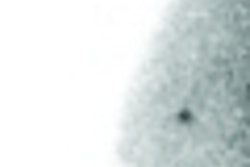Researchers from Sweden compared the uptake of 99mTc-exametazime to that of 99mTc-sestamibi in known breast tumors and found the two radiotracers to be comparable, making the lipophilic agent a possible contender for enhancing scintimammography.
99mTc-exametazime (Certec, GE Healthcare Bio-Sciences, Little Chalfont, U.K.) is currently used for investigating regional cerebral blood flow, according to Dr. Brigitte Wilczek and colleagues from Karolinska University Hospital in Huddinge. For their experiment, they studied the uptake kinetics of 99mTc-exametazime in breast cancer, then compared the results to the uptake of 99mTc-sestamibi, a commonly used tumor-seeking agent in breast cancer. They reported their findings in the Journal of Nuclear Medicine.
The study included women with a recently detected breast tumor (≥ 1 cm) on mammography or sonography. In group I, 20 patients underwent imaging on a dual-head γ-camera (Sopha DST-XL, GE Healthcare, Waukesha, WI) with 1,000 MBq of 99mTc-exametazime. All frames were acquired from 11 to 30 minutes and combined into one image. Nineteen of the 20 main tumors were palpable, and eight were assigned to grade II according to the Elston classification system.
The 21 women in group II had two separate scintimammographic exams with 500 MBq of 99mTc-exametazime and 500 MBq of 99mTc-sestamibi. These tests were done two to seven days apart. For each exam, all frames acquired from 11 to 30 minutes were combined into a single image and reviewed on the same occasion. Twenty of the 21 main tumors were palpable, and six were grade III.
"The dynamic study was necessary for the subsequent comparative study, since detailed data on the uptake kinetics of 99mTc-exametazime in tumors is lacking," the authors wrote (JNM, December 2004, Vol. 45:12, pp. 2040-2044).
The results from group I showed that all main tumors were visualized with 99mTc-exametazime. One previously undetected contralateral tumor also was found. The uptake phase lasted about 10 minutes, and activity was stable after that time.
In group II, all main tumors, as well as three additionally detected tumors, were visualized with 99mTc-exametazime. There was one false-positive exam using this agent. 99mTc-sestamibi failed to depict three main tumors and one of the three additional tumors. However, there were no false-positive findings with this radiotracer. The tracers did not differ in tumor-to-background activity ration or normalized tumor uptake.
While the sensitivity of both tracers was equal, the authors cautioned that their study did not address the issue of specificity. However, these results should "open up a discussion on the possibility of using the agents for characterization of breast tumors."
By Shalmali Pal
AuntMinnie.com staff writer
January 6, 2004
Related Reading
Dilon gets second chance with release of scintimammography unit, June 7, 2004
Scintimammography augments traditional cancer detection methods, March 20, 2004
Molecular imaging advocate promotes innovative breast cancer research, October 30, 2003
Copyright © 2005 AuntMinnie.com



















